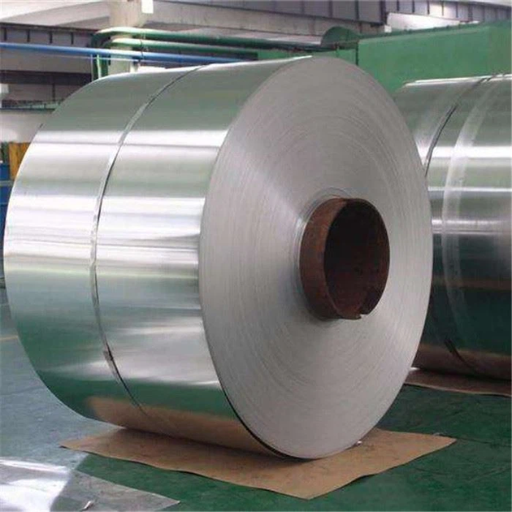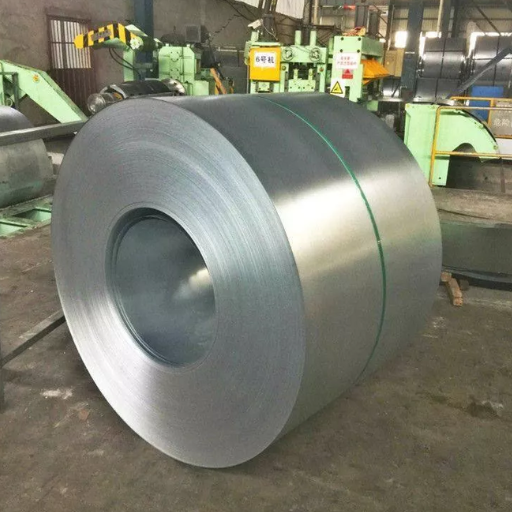When it comes to materials that combine durability, versatility, and performance, 316L stainless steel stands out as a top choice. Known for its exceptional corrosion resistance and strength, 316L stainless steel coil is a staple in industries ranging from construction to automotive and even medical equipment manufacturing. But what makes this material so unique, and why is it so widely used? This comprehensive guide will unravel everything you need to know about 316L stainless steel coil, exploring its properties, applications, and benefits. Whether you're a manufacturer looking for reliable material or simply curious about its uses, this article will provide valuable insights to help you understand its significance and decide if it's the right fit for your needs.
View Zhonggongte Metallurgical-316l stainless steel coil For More Details
What is 316L Stainless Steel Coil?

316L stainless steel coil is a low-carbon version of 316 stainless steel, known for its excellent corrosion resistance and strength. It is made from steel alloyed with chromium, nickel, and molybdenum, which enhance its durability and resistance to pitting in harsh environments. The low carbon content improves weldability and reduces the risk of carbide precipitation, making it suitable for applications requiring high performance in chemical, marine, and medical industries. This type of stainless steel is widely used in manufacturing components like heat exchangers, storage tanks, and surgical instruments due to its reliability and versatility.
Understanding 316L Stainless Steel Composition
316L stainless steel is primarily composed of iron, with the addition of key alloying elements such as chromium (16-18%), nickel (10-14%), and molybdenum (2-3%). Chromium enhances corrosion resistance by forming a passive oxide layer, while nickel increases strength and toughness. The molybdenum content improves resistance to pitting and crevice corrosion, particularly in chloride-rich environments like seawater.
This low-carbon variant of 316 stainless steel contains a maximum carbon content of 0.03%, which minimizes the risk of carbide precipitation during welding. This feature ensures excellent weldability and prevents intergranular corrosion. Additionally, trace elements like manganese, silicon, and nitrogen contribute to the material's strength, ductility, and structural stability. The precise balance of these components allows 316L stainless steel to perform reliably in demanding conditions across industries such as marine, chemical processing, and medical applications.
Differences Between 316 and 316L
The difference between 316 and 316L stainless steel is mainly carbon content. 316L is the low carbon version of 316, with a maximum carbon content of 0.03% compared to 316, which can contain up to 0.08%. 316L's reduced carbon content minimizes carbide precipitation during welding, increasing the material's resistance to intergranular corrosion.
Another difference is how the materials perform in high temperature settings. Both alloys have great tolerance to heat, but 316L's lower carbon content makes it more resistant to sensitization during extended exposure to high temperatures. That said, 316 may slightly outperform 316L in certain applications due to its higher carbon content and better mechanical strength.
In the end, the decision on 316 or 316L depends on the specific needs of the project. In general, 316L is better for projects that involve a lot of welding and project environments with high corrosive factors, whereas 316 is best for applications where strength is the primary focus.
Applications of 316L Stainless Steel Coil
316L stainless steel coil is widely utilized across various industries due to its excellent corrosion resistance, weldability, and durability. In the chemical and petrochemical sectors, it is often used for equipment such as heat exchangers, storage tanks, and pipelines that handle corrosive substances. The pharmaceutical and food processing industries favor 316L for its hygienic properties and ability to withstand frequent cleaning, making it ideal for manufacturing equipment and kitchen applications. Additionally, it is a popular choice in marine environments for boat fittings, fasteners, and desalination systems due to its resistance to saltwater corrosion. Its versatility also extends to construction projects, automotive components, and medical implants, further showcasing its adaptability to diverse use cases.
How is Cold Rolled Stainless Steel Coil Made?

Cold rolled stainless steel coil is made through a precise manufacturing process that begins with hot rolling. Stainless steel is first heated and passed through rollers to achieve the desired thickness. After cooling, it is further processed through cold rolling, which involves feeding the material through rollers at room temperature. This step enhances the steel's surface finish, strength, and overall dimensional accuracy. Finally, the coil may undergo annealing and pickling to relieve stress and improve corrosion resistance before being cut and packaged for use.
Manufacturing Process of Cold Rolled Coils
Cold-rolled coils are widely used in industries such as automotive, construction, and appliances due to their superior surface finish, precise tolerances, and enhanced mechanical properties. The manufacturing process begins with the hot-rolled steel being cooled and then processed further through cold rolling at room temperature. This step increases the strength and hardness of the material by compressing and refining the grain structure. Additional steps like annealing are often applied to restore ductility, making the coils suitable for a variety of applications. The result is a product with exceptional uniformity, dimensional accuracy, and a smooth surface, perfectly suited for high-quality end uses like manufacturing car bodies, home appliances, and precision components.
Advantages of Cold Rolled Over Hot Rolled
- Enhanced Surface Quality
Cold rolled steel offers a smoother, more refined surface finish compared to hot rolled steel, making it ideal for applications that require an aesthetically pleasing or precise surface.
- Improved Dimensional Accuracy
The cold rolling process allows for tighter tolerances and superior dimensional precision, ensuring consistency in thickness and shape, which is critical for high-quality manufacturing.
- Greater Strength and Hardness
Due to the strain-hardening that occurs during cold rolling, the material gains increased strength and hardness, making it suitable for load-bearing and high-performance applications.
- Better Mechanical Properties
Cold rolled steel exhibits enhanced mechanical properties like better tensile strength and superior wear resistance, which are essential in demanding environments.
- Suitability for Precision Applications
The refined finish and tighter tolerances make cold rolled steel ideal for industries such as automotive, electronics, and appliances, where precision and quality are key requirements.
While cold rolled steel comes at a higher cost than hot rolled steel, the superior quality and performance it provides make it a preferred choice for precision-critical applications.
Why Choose China 316L Stainless Steel Coil?

China 316L Stainless Steel Coil is an excellent choice due to its superior corrosion resistance, durability, and versatility. It is well-suited for applications in harsh environments, including marine, chemical, and industrial sectors, where long-lasting performance is essential. Additionally, China offers competitive pricing and efficient manufacturing processes without compromising quality standards, making these coils a cost-effective and reliable solution for diverse industries.
Benefits of Sourcing from China
- Cost Efficiency: China is renowned for its cost-effective manufacturing processes. With access to abundant raw materials and an efficient supply chain, companies can significantly reduce production and procurement costs when sourcing from China.
- Large-Scale Production Capability: China's factories are equipped with advanced technology and scaled to handle high-volume orders, ensuring businesses can meet their demands without delay or compromise on quality.
- Diverse Product Range: From advanced electronics to industrial components, China offers an extensive variety of products. This versatility enables companies to source multiple items from a single location, simplifying logistics and ensuring product consistency.
- Innovative Manufacturing: China's manufacturing sector has grown to include cutting-edge technologies and automation. This innovation ensures businesses receive high-precision, reliable products that meet global standards.
- Global Logistics Expertise: With established shipping networks and exporting expertise, China ensures seamless delivery processes, reducing lead times and enabling timely international distribution.
By leveraging these benefits, sourcing from China proves to be a strategic choice for businesses aiming to balance quality, cost, and scale efficiently.
Top 316L Stainless Steel Coil Manufacturers in China
TISCO (Taiyuan Iron & Steel Co., Ltd.)
TISCO is a renowned leader in stainless steel production. Their 316L stainless steel coils are highly regarded for exceptional corrosion resistance, durability, and precision manufacturing. The company emphasizes advanced production techniques and meets international standards, making them a trusted supplier globally.
Lisco (Lianyungang Iron & Steel Co., Ltd.)
Specializing in stainless steel products, Lisco is known for its high-quality 316L stainless steel coils. They focus on consistent product performance and high-tech production capabilities, offering solutions for industries like construction, chemical processing, and marine applications. Lisco also prioritizes robust quality control processes.
POSCO (Pohang Iron and Steel Company, China Division)
The China division of POSCO delivers premium 316L stainless steel coils, leveraging cutting-edge technology to produce reliable and efficient materials. POSCO's strong focus on sustainability and innovation makes it a favored choice for industries requiring high-standard stainless steel solutions.
These manufacturers consistently deliver top-tier products, adhering to industry benchmarks and ensuring customer satisfaction across various applications. When sourcing 316L stainless steel coils, these companies showcase China's capacity to combine quality with competitive pricing.
Ensuring Quality and Standards
When it comes to ensuring quality and standards for 316L stainless steel coils, manufacturers prioritize stringent quality control measures and adherence to international certifications. Renowned suppliers implement advanced manufacturing techniques, including precision cutting, surface treatment, and testing processes, to ensure the material meets high industry standards. Certifications such as ISO 9001 and ASTM compliance are often highlighted, confirming consistency, durability, and resistance to corrosion.
Additionally, reputable producers emphasize traceability by providing detailed material test reports, guaranteeing transparency in product quality. By leveraging cutting-edge technology and adhering to strict environmental regulations, these manufacturers consistently deliver reliable stainless steel coils that meet the unique needs of a range of industries.
What are the Properties of 316L Stainless Steel?

316L stainless steel is known for its excellent corrosion resistance, particularly in harsh environments, including marine and chemical industries. Its low carbon content enhances resistance to sensitization, making it ideal for applications requiring welding. The alloy also offers high strength, impressive durability, and superior resistance to pitting and crevice corrosion. Additionally, 316L maintains its mechanical properties across a wide temperature range, ensuring reliability and versatility in demanding conditions.
Corrosion Resistance and Molybdenum Content
Molybdenum plays a crucial role in enhancing the corrosion resistance of 316L stainless steel, particularly in chloride-rich environments. The added molybdenum boosts the alloy's resistance to pitting and crevice corrosion, making it highly effective in marine settings and chemical processing applications. Compared to other grades like 304 stainless steel, the higher molybdenum content in 316L provides improved durability against aggressive substances such as acids, salts, and seawater. This property ensures long-term performance and reliability, even in challenging atmospheric and industrial conditions.
Characteristics of Austenitic Stainless Steel
Austenitic stainless steel is known for its exceptional corrosion resistance, non-magnetic nature, and excellent formability. Its primary alloying elements include chromium and nickel, with some grades also containing molybdenum for enhanced resistance to pitting and crevice corrosion. This type of stainless steel is widely used in applications requiring high strength and durability, such as in marine environments, chemical processing, and food-grade equipment. It maintains its mechanical properties across a broad temperature range and offers superior performance in both cryogenic and high-temperature conditions. Additionally, austenitic stainless steel is easily weldable and exhibits a shining, aesthetic finish, making it a preferred choice for both industrial and architectural purposes.
How to Select the Right Stainless Steel Coil?

When selecting the right stainless steel coil, consider the following key factors:
- Application Requirements: Determine the specific environment and purpose of use. For example, marine or chemical environments may require corrosion-resistant grades like 316, while general applications may work well with 304.
- Material Grade: Choose a grade that matches the mechanical and chemical properties needed for your application. Grades differ in strength, corrosion resistance, and temperature tolerance.
- Surface Finish: Select a finish based on aesthetic needs or functional requirements, such as a polished surface for decorative purposes or a matte finish for industrial use.
- Thickness and Size: Ensure the coil thickness and dimensions align with your project’s specifications for proper fit and performance.
- Budget: Assess cost implications and select a coil that meets your needs without exceeding budget constraints.
Factors to Consider in Supplier Selection
When selecting a supplier for stainless steel coils, several key factors should be evaluated to ensure reliable service and quality products:
- Reputation and Experience: Choose a supplier with a well-established reputation and extensive experience in the industry. Look for customer reviews, testimonials, and case studies that demonstrate their reliability and expertise.
- Product Quality and Consistency: Ensure the supplier provides high-quality stainless steel coils that meet material specifications and industry standards. Consistency across batches is crucial to maintain the integrity of your applications.
- Inventory and Availability: A dependable supplier should maintain a robust inventory with a variety of grades, sizes, and finishes. This ensures they can meet your needs promptly and accommodate any urgent requirements.
- Pricing and Payment Terms: Competitive pricing is essential, but also consider the value provided in terms of quality and service. Favorable payment terms can support your financial planning and project timelines.
- Certification and Compliance: Verify that the supplier’s products are certified according to relevant industry standards, such as ISO, ASTM, or equivalent. This ensures the materials are safe, durable, and compliant with regulations.
- Customer Support and Communication: Effective communication and responsive customer service are vital. A supplier who actively collaborates with you and addresses your concerns can streamline your procurement process and improve overall satisfaction.
Comparing 304 and 316L Options
When comparing 304 and 316L stainless steel, the primary differences lie in their composition, corrosion resistance, and cost. Both are versatile and widely used, but they suit different applications based on environmental conditions.
- Composition: The key distinction is in the alloy content. 316L contains molybdenum, which enhances its resistance to corrosion, especially against chlorides and harsh chemicals. On the other hand, 304 lacks molybdenum, making it more susceptible to certain types of corrosion but still highly durable in less aggressive environments.
- Corrosion Resistance: 316L offers superior resistance to pitting and crevice corrosion, making it ideal for marine environments or industries involving chemicals and salt exposure. 304, while resistant to many forms of corrosion, is better suited for indoor or non-corrosive applications.
- Cost and Applications: 304 is more cost-effective and commonly used in general-purpose applications, such as kitchen equipment, architectural structures, and automotive parts. 316L, due to its enhanced properties, is used in more demanding settings like medical devices, marine equipment, and chemical processing.
Understanding ASTM and JIS Standards
The ASTM (American Society for Testing and Materials) and JIS (Japanese Industrial Standards) are widely recognized systems that define quality, safety, and performance benchmarks for various materials, including metals like stainless steel. While ASTM standards are predominantly used in the United States and are internationally accepted, JIS standards are primarily used in Japan and neighboring regions.
Both systems ensure consistency and reliability in materials used for manufacturing and construction. For stainless steel, ASTM standards focus on specifications such as chemical composition, mechanical properties, and manufacturing processes, like in grades 304 and 316L. On the other hand, JIS provides similar benchmarks but with slight variations in classifications and testing methodologies aimed at meeting regional requirements.
When comparing the two, materials graded under JIS may slightly differ in properties but are often cross-referenced with ASTM equivalents to ensure compatibility in global projects. The choice between ASTM and JIS standards depends on the project’s location, industry-specific requirements, and regulatory expectations.





